
The PFT motor mk1
The Poynting Flow Thruster project
By Jean-Louis Naudin
created on September 5th, 1999 - JLN Labs - Last update September 11th, 1999

The PFT motor mk1
The Poynting
Flow
Thruster
project
By Jean-Louis Naudin
created on September 5th, 1999 - JLN
Labs - Last update September 11th, 1999
The PFT Motor mk1 uses two asymmetrical capacitors for generating a continuous rotation of the rotor at high speed. The rotor is composed of a dielectric ( a common plastic ) cylinder with an aluminum sheet fixed in the inner surface, this is the rotating armature of the cylinder capacitor. Two steel balls with the same diameter than the dielectric cylinder have been used as the fixed armature of the capacitor. The measured capacitance is about 12pF ( with 4 layers of a thin polyethylene sheet on the outer surface of the rotor ). One steel ball has been connected to +28kV DC and the other to the ground (OV).
The PFT Motor mk1 needs very weak current ( 200 RPM with only 5 micro-Ampere !!, it is also able to turn at a higher speed ( up to 1370 RPM with only 20 micro-A...). This motor can be powered from atmospheric electricity by means of a simple earth field antenna or a small electrostatic generator. The PFT Motor mk1 has no brushes and it can run for a long time.
The PFT Motor mk1 concept will be soon used in a new PFT spacecraft engine design.
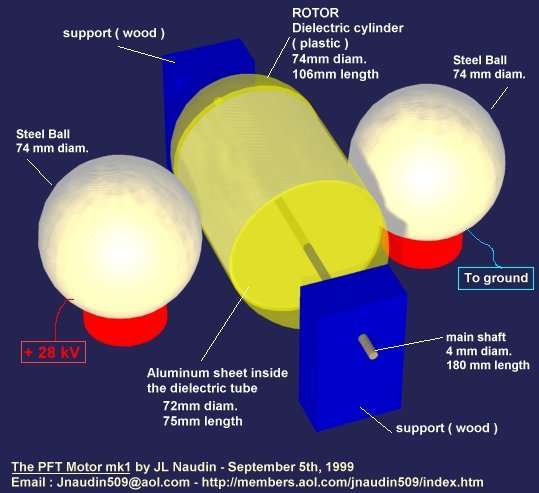
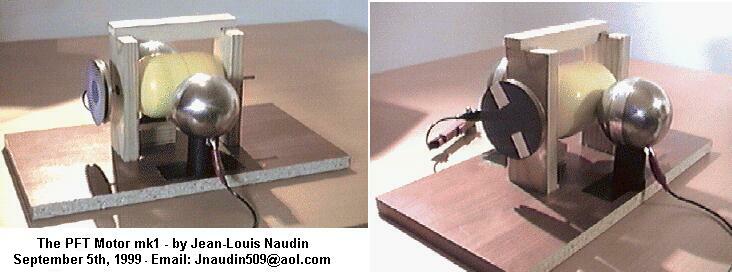
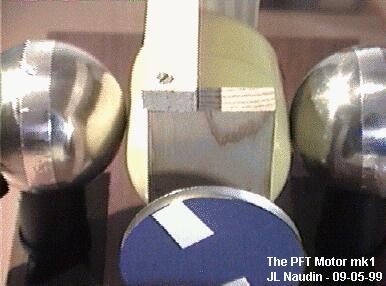
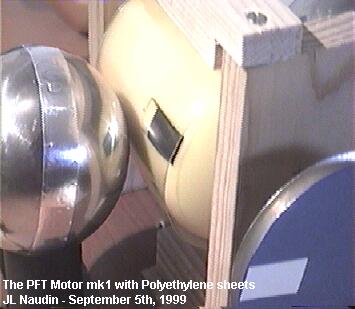
The gap between the steel ball and the rotor is about 1mm. On the left picture you will notice that some polyethylene sheets have been added for increasing the capacitance. You see also the aluminum wheel with two white marks for measuring the turn speed with an optical tachometer.
Experimental setup: The PFT motor mk1 has been tested successfully powered with an electronic High Voltage DC generator, the current has been measured with a digital multimeter and the turn speed with an optical tachometer.
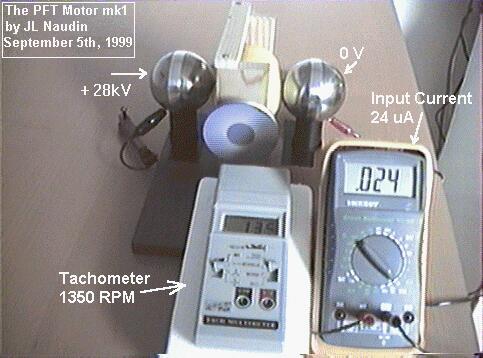
Some tests have been done with different layers of polyethylene (K=2.3) added on the outer surface of the main rotor. You may notice that the turn speed increases while the current decreases with the number of polyethylene sheets , this is a very interesting characteristic and this shows clearly that with some high K dielectric like BaTiO3 ( K>10000), overunity can be reached and thus a self-sustained running operation can be obtained...
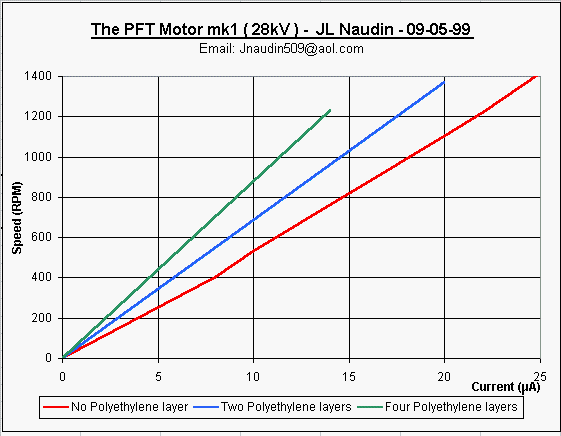
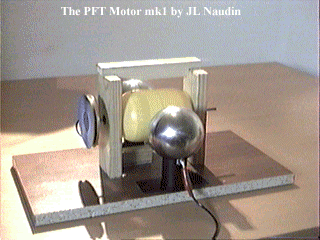
See also : The PFT Motor mk2, a enhanced high speed version...
![]() Email : JNaudin509@aol.com
Email : JNaudin509@aol.com
Return to the Advanced Propulsions Researches page